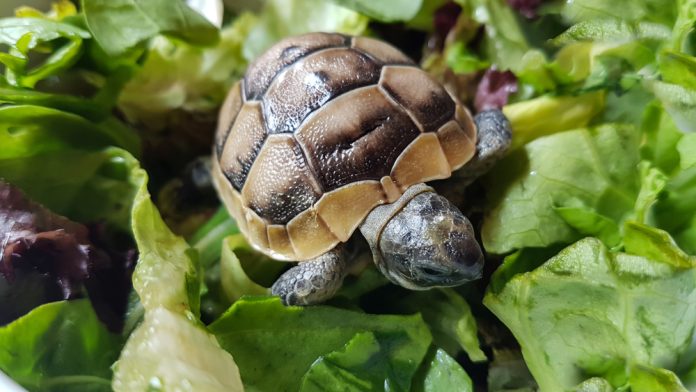When deciding on a pet tortoise, two popular choices are the Russian Tortoise (Agrionemys horsfieldii) and the Greek Tortoise (Testudo graeca). Both species are cherished for their manageable size and engaging personalities. This article provides a comparison guide for Russian and Greek Tortoises, highlighting their differences to help you choose the ideal pet.
Size and Lifespan
Russian Tortoises
Russian Tortoises are relatively small, typically reaching 8-10 inches in length. They are known for their longevity, often living up to 40 years or more with proper care. Their compact size makes them ideal for indoor habitats, and their hardy nature ensures they can thrive in a variety of environments.
Greek Tortoises
Greek Tortoises are slightly larger, growing to about 10-12 inches in length. They also have a long lifespan, similar to Russian Tortoises, often exceeding 50 years. Their larger size requires more space, which is something to consider when planning their habitat. They are equally robust and adaptable, making them suitable for both indoor and outdoor enclosures.
Habitat and Environmental Needs
Russian Tortoises
Russian Tortoises originate from arid regions, so they prefer a dry, well-ventilated environment. An indoor enclosure should mimic these conditions with a dry substrate, such as a mix of topsoil and sand. Outdoor enclosures should provide shaded areas and plenty of space for burrowing. Maintaining a temperature gradient with a basking area around 90-95°F and a cooler area around 70-75°F is crucial for their well-being.
Greek Tortoises
Greek Tortoises come from a variety of habitats, including Mediterranean forests and scrublands. They require a slightly more humid environment compared to Russian Tortoises. Their substrate should retain some moisture but not be wet. A temperature gradient similar to that of Russian Tortoises is needed, with a basking area around 90-95°F and a cooler area around 70-75°F. They also benefit from UVB lighting to help with calcium absorption and overall health.
Diet and Nutrition
Russian Tortoises
Russian Tortoises are herbivores, primarily eating a diet of leafy greens, vegetables, and occasional fruits. Their diet should be high in fiber and low in protein and fats. Common foods include dandelion greens, collard greens, and hibiscus leaves. It is important to provide a varied diet to ensure they receive all necessary nutrients.
Greek Tortoises
Greek Tortoises have a similar diet to Russian Tortoises, consisting mainly of leafy greens and vegetables. They also enjoy occasional fruits as treats. Foods like kale, mustard greens, and endive are excellent choices. Ensuring a balanced diet rich in calcium and low in oxalates is essential to prevent metabolic bone disease and other health issues.
Temperament and Behavior
Russian Tortoises
Russian Tortoises are known for their active and inquisitive nature. They enjoy exploring their environment and are relatively social with their owners. They can be a bit territorial, especially males, so it’s important to provide enough space if housing multiple tortoises. Their curious nature makes them engaging pets, but they do require mental stimulation and a well-structured habitat.
Greek Tortoises
Greek Tortoises are generally calm and docile. They are less active than Russian Tortoises but still enjoy exploring their surroundings. They tend to be more solitary and can be shy, especially when introduced to new environments or people. Greek Tortoises are gentle and easy-going, making them suitable for families and first-time tortoise owners.
Health and Care Considerations
Russian Tortoises
Russian Tortoises are hardy and generally healthy when provided with proper care. Regular health checks, a balanced diet, and a clean environment are key to preventing common health issues like respiratory infections and shell rot. They require UVB lighting to synthesize vitamin D3 and absorb calcium, crucial for their bone health.
Greek Tortoises
Greek Tortoises are also robust but require attention to their humidity needs to prevent respiratory problems. Regular shell checks and maintaining proper hygiene in their habitat are essential to avoid shell infections. Like Russian Tortoises, they need UVB lighting and a diet rich in calcium to support their growth and health.
Conclusion
Choosing between a Russian and a Greek Tortoise depends on your available space, environmental conditions, and personal preferences. Russian Tortoises are active and hardy, making them suitable for interactive pet owners who can provide a stimulating environment. Greek Tortoises are calm and gentle, ideal for those seeking a more relaxed and docile companion. Both species offer unique experiences and can become cherished members of your family with proper care.Understanding the specific needs of each species will help you make an informed decision and provide the best care for your chosen pet tortoise.

